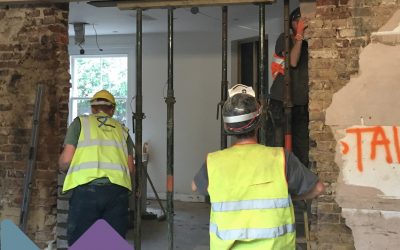In today’s Property Surveying blog post topic, we are going to be looking at licence for alterations procedures.
Particularly, we are going to be looking at how long licence for alterations procedures can take, along with the typical hurdles to getting the licence for alterations in place.
Licence for alterations are required for almost all types of alteration works that are proposed to be undertaken to leasehold properties throughout England and Wales.
The specifics and wording of the property’s lease will set out and determine the procedures that a leaseholder will need to follow prior to commencing the works on site.
Licence for alterations procedures are in place to ensure that the neighbouring leaseholders, along with the freeholder are all considered through the eyes of the construction works prior to the works commencing.
One of the most typical questions we find ourselves asked here at Stokemont, is how long the overall licence for alterations procedures will take.
Our take on it here at Stokemont, is that the timings surrounding obtaining licence for alterations consent are very much determined by the overall works that are taking place and the alterations covenant.
Alterations covenants are covered into three difference types. We will look at these as follows:
Fully Qualified Covenant
A fully qualified covenant is the most favourable alterations clause that a leaseholder can find within their lease.
Effectively it will mean that so long as the leaseholder goes through the necessary procedures with their freeholder, the freeholder cannot refuse, or withhold alterations consent.
If you consider a traffic light, this would be a green light.
Qualified Covenant
A qualified covenant is much the same as a fully qualified covenant, however the only difference being that the landlord does not need to provide the leaseholder with consent for the works.
Effectively, this will mean that the freeholder is within their rights to withhold the alterations consent.
In some cases, it is not unknown for the freeholder to request a premium, or fee, for granting the alterations consent.
If you consider a traffic light, this would be an amber, or orange light.
Absolute Covenant
An absolute covenant is the most unfavourable leasehold alterations covenant.
It will mean that the freeholder is unlikely to give you their alterations consent. The reasoning behind this, is that if they do grant the consent, they do carry the risk that they could be held liable by other leaseholders within the property, both current and future, for departing from the lease’s terminology and wording.
If you consider a traffic light, this would be a red light.
Alterations clauses will greatly define and determine the overall timings of the procedures.
Generally speaking if you consider the traffic light rating system, the same principles will apply.
The types of alterations that are taking place will also significantly determine how long the procedures take.
If the alterations procedures are more towards the realm of straightforward, then obviously there is going to be less time and procedure that needs to be administered in advance of the works taking place.
Licence for alterations procedures would generally cover the following types of works:
- Structural alterations.
- Alterations to the layout of the property.
- Removing structural load bearing walls.
- Removing non-structural load bearing walls.
- Changing carpets to hard floors.
- Changing dry areas (rooms that do not have any service connections) to wet areas (rooms that have service connections, such as bathrooms or toilet).
- Changing windows.
- Electrical refurbishment work, such as re-wiring.
- Replacing ceilings.
Alterations works should always be carefully considered by the leaseholder, and commonly can often be overlooked up until the last moment.
Here at Stokemont, we would advise ensuring that the discussions to obtain the licence for alterations are sought at the earliest possible timings, this will avoid unnecessary delay to the works on site and ultimately mean that you avoid situations such as prolonged property vacancy, loosing a contractor as a result of not being able to start the works, and the associated cost surrounding temporary accommodation.
If you would like to discuss licence for alterations procedures with our team of qualified and experienced RICS Chartered Surveyors here at Stokemont.
Please feel free to give us a call today and our team of property professionals will be more than happy to assist and advise you.




